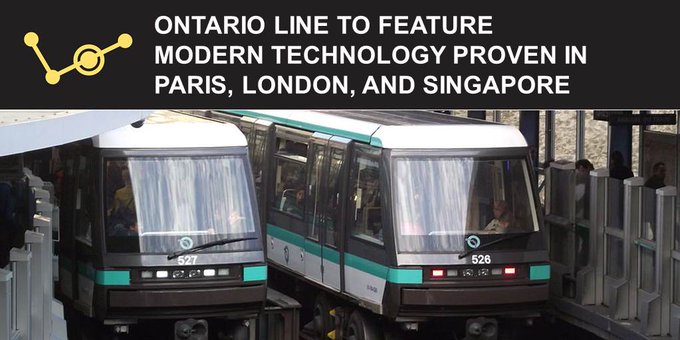Streety McCarface
Senior Member
So they want SNCF to operate this thing.
So they want SNCF to operate this thing.
Oh nice, they actually confirmed platform edge doors are happening (well as much as anything is confirmed at this point). That's a relief.
The idea of canopy structures above the outdoor sections is also interesting, although that's given as a possibility, vs the more certain terms they use around the platform doors.
Everything helps fulfill capacity. An automated system using a constant flow of shorter trains – and platforms of just 100 metres long – help add up to as little as 90 seconds between trains, rather than every two minutes.
“With automated, you can actually expand your peak hours significantly, and help segments of the population that are not usually well served by transit because they’re not in the regular business hours,” he explains.
Next election - June 2022.
AoD
Well, it's official. The Ontario Line is never happening.
On the bright side, when the next government resurrects the DRL, at least we'll likely get the DRL North bundled with it, now that a DRL to Eglinton is in the public consciousness.
It will just encourage people with money even more to move downtown. Then Toronto suburbs will be less desirable unless you live right beside a subway station. the good news would be that our downtown would become even more dense.Soon Toronto is going to reach the point of no return where the Yonge line is so overcrowded, that if it ever happens to shut down even for just a minute this city will just end up being a complete gridlocked mess.
We like to toss around the term gridlock pretty loosely here these days, but Toronto will legitimately become one of the first gridlocked cities in the world if there are no shovels in the ground for the Ontario Line, DRL or whatever else people want to call this thing by 2025. By that point we will be able to say that we have world class gridlock to the likes of which no one has ever seen before.
It actually already scores as one of the most gridlocked cities in the world, at least for commuters.Soon Toronto is going to reach the point of no return where the Yonge line is so overcrowded, that if it ever happens to shut down even for just a minute this city will just end up being a complete gridlocked mess.
We like to toss around the term gridlock pretty loosely here these days, but Toronto will legitimately become one of the first gridlocked cities in the world if there are no shovels in the ground for the Ontario Line, DRL or whatever else people want to call this thing by 2025. By that point we will be able to say that we have world class gridlock to the likes of which no one has ever seen before.
Everything coming out of Metrolinx seems to be written by a cheap PR agency

Light metro is something Toronto should have adopted years ago. Would have been way better for Sheppard, Eglinton and revamping the Scarborough lrt. I'm not against it so long as the trains are long enough to match the capacity. They better not cheap out on it like Vancouver did.
Yeah the Scarborough RT is light metro, I see how my post wasnt clear on that. I had meant modernizing it, not replacing it with light metro (which it already is!).We have a "light metro" here in Toronto - it's been in service since 1985. But the implementation was so flawed as to damage the capability of it being used again here for decades - and possibly still decades to come.
It's so flawed that it was slated to be converted to an LRT, so what does that tell you?
Dan
Most like Paris Line 1 but with steel wheels